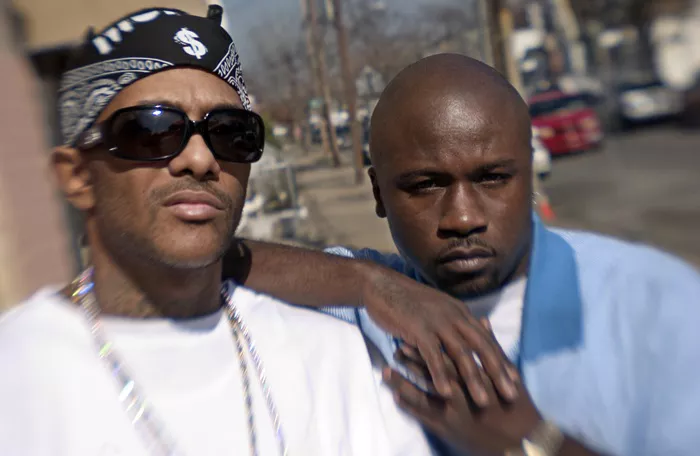In the vibrant realm of urban music culture, two distinct yet interconnected forms stand out: freestyle rap and hip hop. While often used interchangeably, these terms encapsulate different elements that contribute to the rich tapestry of modern music. To truly appreciate their differences, we delve into the origins, characteristics, and evolution of each, uncovering what sets them apart while acknowledging their shared roots.
I. Origins and Evolution
Freestyle rap, born from the improvisational spirit of jazz and blues, emerged in the late 1970s and early 1980s within the burgeoning hip hop scene. It found its roots in the street corners and block parties of New York City, where MCs engaged in lyrical battles and spontaneous rhyming sessions. This impromptu style of rapping, often accompanied by beatboxing or minimal instrumentation, became a hallmark of freestyle.
Hip hop, on the other hand, encompasses a broader cultural movement that originated around the same time in the Bronx, New York. It incorporates four key elements: rap music (MCing), DJing, graffiti art, and breakdancing (B-boying). Initially a means of creative expression and social commentary for marginalized communities, hip hop quickly spread across urban landscapes, influencing fashion, language, and societal norms.
While freestyle rap is a subset of hip hop culture, it focuses specifically on the art of spontaneous lyrical improvisation. Freestylers adeptly weave together rhymes, metaphors, and wordplay on the spot, showcasing their lyrical prowess and ability to engage with their audience in real-time. This contrasts with the broader scope of hip hop, which encompasses a spectrum of artistic expressions beyond just freestyle rapping.
II. Artistic Expression and Performance
Freestyle rap thrives on improvisation and spontaneity, challenging MCs to think quickly and creatively. Whether battling an opponent or freestyling alone, the goal is to deliver clever, witty, and often humorous lines that captivate listeners. The competitive nature of freestyle battles emphasizes technical skill, delivery, and crowd reaction, creating an electrifying atmosphere where verbal dexterity reigns supreme.
In contrast, hip hop as a cultural movement encompasses a wider array of expressions. Beyond rap battles, hip hop artists create studio albums, collaborate with DJs, produce beats, and engage in graffiti art or breakdancing performances. This multifaceted approach allows for diverse avenues of creativity, from politically charged lyrics to party anthems, reflecting the complex realities of urban life.
III. Musicality and Production
Freestyle rap is distinct in its minimalistic approach to musical accompaniment. Often performed acapella or over simple beats, freestylers rely primarily on their vocal delivery and lyrical content to captivate their audience. The absence of elaborate production allows for a raw, unfiltered expression of the MC’s lyrical prowess and improvisational skills, making each freestyle session unique and unpredictable.
In contrast, hip hop music production is characterized by its innovative use of sampling, looping, and digital instrumentation. Producers play a pivotal role in shaping the sonic landscape of hip hop, creating beats that complement the lyrical content and setting the mood for the song. From classic boom-bap rhythms to experimental electronic sounds, hip hop production continues to evolve, blending influences from funk, soul, jazz, and electronic music.
IV. Cultural Impact and Legacy
Both freestyle rap and hip hop have left an indelible mark on global culture, influencing music, fashion, language, and social movements. Freestyle battles serve as a training ground for aspiring MCs, honing their skills and building camaraderie within the hip hop community. The competitive nature of freestyle encourages innovation and pushes artists to push their creative boundaries, ensuring the evolution of the art form.
Hip hop, as a cultural phenomenon, has transcended geographical boundaries to become a global movement. From its humble beginnings in the Bronx, hip hop has evolved into a multifaceted industry that spans continents and bridges cultural divides. Its influence can be seen in mainstream media, corporate advertising, and academic discourse, reflecting its enduring relevance and impact on contemporary society.
V. The Intersection and Collaboration
While freestyle rap and hip hop represent distinct forms of artistic expression, they often intersect and collaborate in dynamic ways. Many renowned hip hop artists started their careers by freestyling on street corners or participating in rap battles, showcasing the symbiotic relationship between freestyle and the broader hip hop culture. Freestyle sessions at parties, clubs, and radio shows serve as platforms for emerging talents to gain recognition and build their fan base.
Collaboration between freestylers and hip hop producers has also led to innovative music projects that blend improvisational lyricism with intricate musical arrangements. This synergy allows artists to experiment with different styles and genres, pushing the boundaries of what defines hip hop music. From freestyle cyphers to studio recordings, these collaborations highlight the versatility and adaptability of hip hop as an evolving art form.
See Also: How Early Rap Music Was Distributed? A Historical Perspective
VI. Conclusion
In conclusion, freestyle rap and hip hop represent distinct yet interconnected facets of urban music culture. Freestyle rap thrives on improvisation, spontaneity, and lyrical prowess, challenging MCs to think quickly and creatively. It serves as a dynamic subset of hip hop culture, emphasizing verbal dexterity and competitive spirit in live performances and rap battles.
Hip hop, as a broader cultural movement, encompasses rap music (MCing), DJing, graffiti art, and breakdancing, reflecting the diverse expressions of urban creativity. Its influence extends beyond music to encompass fashion, language, and societal norms, shaping the cultural landscape on a global scale. While freestyle rap focuses on live improvisation and lyrical battles, hip hop embraces a spectrum of artistic expressions and collaborations that continue to evolve and redefine the genre.
Together, freestyle rap and hip hop celebrate the power of words, beats, and creativity to unite communities, challenge norms, and inspire change. Whether freestyling on street corners or headlining international tours, these art forms continue to captivate audiences and influence the next generation of artists, ensuring their enduring legacy in the annals of music history.

